Headline Singur - Food self-sufficiency, barren land, fighting unemployment, and other misrepresentations.
By Amitadyuti Kumar
It was the 3rd week of May, 2006 – the 18th day to be exact. The Left Front Government was sworn in for the 7th time in a row. Almost immediately Singur, an otherwise non-descript rural area in the Hooghly District, suddenly made the headlines. On that afternoon, the Chief Minister Mr. Buddhadeb Bhattacharyee, sitting alongside Mr Ratan Tata, the chief of a dominant Indian capitalist group - the TATA’s, announced in a press conference that Tata Motors had made an agreement with the state government to set up a factory for small cars at Singur. In the press conference it was also made public that the state government would hand over 1000 acres of land in Singur. It cleverly remained silent on whether any Memorandum of Understanding (MOU) had been signed.
Towards the evening the news spread in Singur and so did the people’s anger. The next day marked the beginning of public outrage. It did not wait for any organizational strength, political leadership. The fear of unemployment and starvation was so palpable that it broke all the barriers of age, gender and what’s more their political identities. It is not the first time that farmers’ land is taken away. Haldia, Bakreshwar or Rajarhat have their own sordid tales of how the government had given away their land to the industrialists or promoters, all in the name of development and industrialization. There were resentments and protests in those areas too. But the administration strengthened by the muscle power of the ruling party CPI (M) chose to ignore the popular sentiment. Protest and opposition in Singur assumed a different dimension, and because it assumed a different dimension, Singur could find a place in the media, if not hitting the headlines. Even the ruling CPM organ the Ganashakti had to find place for two to three news item/ commentaries a day without exception for the last seven months— because while struggling for their right to life and a dignified livelihood Singur people has brought to the fore certain basic and important issues regarding development-industralsation-urbanisation and the eventual eviction and destruction of farmland. The more the issues were raised and in-depth discussions and debates went on, the more the government, the ruling party and their leaders took refuge in more and more lies and deceptions. The movement of the people of Singur for their right to life and farmland no longer remained the struggle of Singur people alone. It gave rise to more serious questions about the efficacy of development projects that keep 96% of the population of the area outside its ambit. The intelligentsia, economists politicians and sociologists came forward to find solutions of such riddles and have tried to deal with the issues. Their overwhelming opinions supported by facts and figures, expert opinions, and past experiences in home and abroad conclusively point to the fact that the government is erring. It has triggered off a whole lot of questions like whether it is a car manufacturing unit (or for that matter a liquor shop per thousand population or ultramodern housing projects) that West Bengal primarily needs at the moment for development. Questions are raised whether such projects are necessary to solve its basic problem of industrial stagnation and unemployment? If that be so, then by whom, when and on what basis has this approach been decided upon? Questions were also raised about how to select the land necessary for industrialization, about the long term as well as immediate effects on environment as a result of conversion of farmland to industrial plot, whether alternative sites can be found without disturbing agricultural land and so on. Comparisons are made to find out whether there will be any real employment generation if industries are set up on agricultural land. People became concerned about the future of those who are going to loss the roofs over their heads and their daily bread, whether justice is being meted out to them or not. The imminent uncertainty in the availability of food and the likely food crisis resulting from wanton destruction of farmland are also making people concerned.
Singur
‘Singur’ is a name new to the present day political workers. The railway routes of Howrah-Barddhaman Chord Line and Howrah-Tarakeswar branch make a perfect cross at Singur. A few decades ago, the area remained mostly inundated during rainy season by the two overflowing rivulets, the Kanakunti, the Zulkia, and the discharge from DVC dams. The last 24 years have seen the execution of only half of the planned Ghia-Kunti Drainage Scheme under the Lower Damodar Basin project. This alone has substantially reduced the fury of flood. Three major national highways run through or by Singur area. Bowbazar and Sheoraphuli Hat, the two of the biggest wholesale South Bengal markets for fruits and vegetables are in the range of 8/10 kms. The famous Ratanpur potato market is in Singur. One of the biggest Multipurpose Cold storages of the state, meant for storing vegetables as well as potato is situated in the area.
As the fury of flood has been tamed to a certain extent, the farmers have been making a modest earning thanks to the harmonious blend of fertile loamy soil and labour. Besides paddy and jute, potato and vegetables are the main cash crops here. Even the young graduates or the masters of these poor and the middle class families have engaged themselves in farming once the prospect of getting a service proves to be an illusion.
Because of improved farming techniques, application of fertilizers and pesticides, Singur two-thirds of Singur flood plain has by and large become a multi-crop land.
According to the statistics provided in a state government booklet (Krishi Upakaran Byabsayee Sahaika–Handbook for Agricultural Input Dealers, published by the Singur Block Agricultural Development Department in 2005), the block uses a whopping 10, 001 metric tonnes of fertilisers and 3061.5 metric tonnes of insecticides and other plant medicines every year. To cater the needs there are 303 agricultural inputs trading centers in the Block, whose 83% (8830 Hectares out of 10,526 Hectares agricultural land) is irrigated. The crop density of the Block is 220%, a step higher than the district average of 215%
Singur and its surroundings have a glorious past in peasant movement and democratic movements. The names of Dubir Bheri, Bara-Kamalapur and other villages are gloriously mentioned in the annuls of the famous tebhaga movement of the 1949-52 period. Late Dulal Ray, the noted Tarja Singer immortalized the heroic struggle of the legendary five women and other tebhaga movement activists.
Why Singur?
This is the Singur that the Government chose for Tata’s small car project, About 27% of the five mouzas (out of 16) of the Block has been finally selected ‘acquired’ and fenced off with a massive police action for the purpose. The process of selection of the site is quite unprecedented and queer. From the statements of the Chief Minister, only this much could be ascertained that the Tatas opted for it and the government accepted readily. Even as late as on 26 December, the CM was reported to have said that the government had no option but to accept Tatas’ proposal. The Government’s avowed policy is to consult with the affected and local people on all programmes of development. The 74th Constitutional amendment also calls for such consultations. There was not a semblance of a consultation or a discussion. The people first learnt from the media that the plots of land that has sustained them generations after generations, despite odds of floods and draughts were going to be taken away by the government. These are the plots of land around which they have weaved the dreams of their future taking it for granted that these plots of land were going to be the only means for the future sustenance of their children who will not be able to find a better living in the scheme of development of the country. They could not believe their ears, when they first heard it. Presently a small plot of land of as little as 5 cottas can encourage a sharecropper to send his kids to school nourishing an aspiration for a better future–this is going to be grabbed in the next couple of months. They could not believe their ears, when they first heard. Not only the people going to be affected, even the functionaries of the local government viz., BDO, the head of the Panchayet and even the local CPI (M) bosses were kept in dark too. But the laws of the land, the declared state policy all say in unison that all projects should be planned at the grass roots that are at Panchayet level. One can not but wonders—what are the compulsions that leave the government without any option but to accept Tatas’ proposal?
Avijit Mukherjee, the BDO of the block said—it is Singur because the official records show this area is marked as ‘single-cropped’, non-irrigated or ‘barren’. These records were based on surveys dating back to 1990. During the last 15 years, in the proposed Tata Motors site, the peasants have got installed 35 shallow pumps, 28 of which with their own money. In addition, there are three deep-tube wells. The two rivulets, the Zulkia and the Kunti – flowing along the either sides provide a substantial irrigational facility. In the dry season these rivulets and the DVC (Damodar Valley Corporation’s dams) release irrigate the fields. How can such land be called single-cropped, barren or non-irrigated? Even a lay man is aware that a single crop land in this part of Bengal means that the land has no irrigational facility; only the rain dependant cultivation is possible.
A blatant lie
The farmers made appeal before the government pointing to the mischief n Government records; they took part in demonstration against the DM to highlight the incorrect records. It was expected that the government would relent once the truth is known. But the Chief Minister made his stand clear. The Tata’s have asked for that particular land, and that’s final. The Government, the Industry Minister, the Land Minister only echoed their leader’s view. Even Sm Brinda Karat the non-resident Member of the Rajya Sabha from West Bengal repeated this lie in her dispatch n CPM organs and the internet. The statistics cited earlier in this dispatch quoting state government sources, the fact that the whole Singur block has an average crop density of 220% and the fact that the proposed Tata Motors site is most well irrigated and the most fertile in the block and scores of photographs and video clippings in the print and electronic media showing the fields of the area nails her lies. Here is a tale told by the Singur BDO in presence of the local Panchayet boss Ranjt Mandal recorded on 15 June–Singur is a 40 minutes’ drive from the airport along the newly built Expressway via the new Vivekananda Setu under construction. So the Tatas or their top brass flying from other metros will have to waste little time to reach their destination. Whoever expected to hear such a far-fetched excuse and that too from an avowedly pro-poor government and it comes at the expense of a 15000-strong agricultural work-force!
This control of the industrialists over the government, this ‘as you said sir’ attitude of the government is potentially dangerous for democracy and democratic values. The question naturally arose–is the government being run by the Tatas or for that matter other industrialists and capitalists? The government’s helpless and repeated admission that it has no option but to accept Tatas’ proposal, and the fact that the proposal of Tata Motors small car project was not discussed, approved or not even heard of in any discussion regarding the government’s industrial policy or any other forum or a constitutional body before the fateful day of swearing in of 7th LF government, hints at the danger and dark days ahead for democracy. Reagan regime in the US diverted Govt resources for the benefit of the industrialists who were facing serious challenges from Japan; Clinton’s rule saw to it that the oil giants consolidate their hold on the Government and state machinery. This hold in turn drove US under Bush administration to invade and occupy Iraq or Afghanistan, violate the civil and democratic rights of the US citizens or to go against civilization, Noam Chomsky has shown in ‘Propaganda and the Public Mind’.
The issues relating to the right to livelihood or to the share of the fruits of the ‘development’, or the government’s surrender to the industrialists, food security and a host of related issues churned the political atmosphere of the state. Singur catalysed the building up of a united opposition against all similar projects—from Nandigram and Haripur in Midnapore to Bhangar and Baruipur in the North 24 Parganas. A considerable section of Rights activities and social organizations sided with the people of Singur. At the start of the movement and till late October, barring a few, the intelligentsia and the Buddha sycophants took refuge under an absolute silence. The developments of the next couple of month almost completely polarized the political opinion of the parties and the individuals. Sadly, the CPI (M), to be specific the ruling clique of the CPI (M) along with a handful of powerful bureaucrats is on one side. Thus the post 18th May 2006 Singur is now a name of a completely different significance n the state, whose repercussions are now felt in the National scenario.
Some facts and figures
The WB Land & Land Reforms Minister had gone on record to say in the state assembly that about 1.20 acres of farmland has become casualty in the government’s ‘urbanization’ and industrialisation programmes in the last five years. He declared further that in the next 5 years, the government is going to transfer another 1 lakh acre or more farmland to the industrialists and promoters – for the sake of industrialization and urbanization. He did not conceal his concern for a resultant food-crisis on the floor of the House. The state agricultural minister was of the same view. But the big brother CPM and the senior cabinet members ruled out the possibility of any food crisis. The dissenting ministers had to fall in line. They parroted the rhetoric that Bengal is self-sufficient in food and leads in agricultural production. So it’s the time to use farmland for industry.
Whether West Bengal is Self-sufficient in Food Production?
As per the latest figures available from the Bureau of Applied Economics and Statistics of the West Bengal Government, the availability of food grains (considering both the domestic production and imports) is 177 kg per head per year for the period year 2001-05. According to the Planning Commission an adult requires an intake of 193 kg of food grains for subsistence. It is to be kept in mind that in those aforesaid years, there was no significant loss of food grains because of flood, draught or natural disaster. Despite this, the state faces a shortage of food grains @ 16 kg per head per year that is, approx 16 million tonnes (assuming the state population to be around 10 cores). This crisis would worsen by a further 10% if the next 5 years see shrinkage of another 1 lakh acre of farmland. This will totally upset the somewhat self sufficiency achieved in food grains and will totally jeopardize any prospect to achieve food self sufficiency and hamper food security of the people of lower income groups and the poor. This will lengthen the lines of starvation deaths-from Amlasole to Jalangi and elsewhere. According to latest National Sample Survey data (NSS Report No. 471), 15% of the state’s population can avail less than 70% of required daily calorie intake (2700 Cal per day) and.64% of them gets less than the required amount. In terms of daily intake West Bengal lags behind six states including Bihar and Orisa. According to a state government publication (Advancement in Agriculture: History of Success—Krishir Agragati—Dharabahik Saphalyer Itibritta) monthly per capita intake of food grains in the state fell to 13.27 Kg in 1993-94 (latest available data) from 15.25 Kg in 1972-73.
According to the findings of the UN Special Rapporteur on the Right to Food, Jean Ziegler, who presented his report on Extent of Chronic Hunger and Malnutrition in India before the UN Human Rights Council in Geneva on 22 September, 2006, food grain availability in rural India has fall to 152 kg per capita, 23 kg less than in the 1990s. Ziegler’s report was based on his visit to India from August 20 to September 2, 2005,”motivated by the fact that India has the largest number of undernourished people in the world and one of the highest levels of child malnutrition”. The report, which reviews “the situation of hunger, malnutrition and food insecurity in India” and whether the theory of “hunger amidst plenty” stands, has made some startling revelations. He observed that falling agricultural wages, increasing landlessness and rising food prices have severely undermined the right to food. Over half of India’s women and children are suffering from severe malnutrition and chronic undernourishment. Over 47 percent children are underweight and 46 percent stunted in their growth figures higher than most countries in poverty stricken sub-Saharan Africa. The poorest 30 percent of households eat less than 1700 kilocalories per day per person, well below the international minimum standard of 2100 kilocalories per day, even if they spend 70 percent of their income on food. (Times of India 24 September, 2006)
But this is what the masters of the world, the imperialists long for. Food deficiency will necessitate import and that is not so easy. The global food market is controlled by a handful of transnational food cartels. By virtue of the prevailing system of ‘forward trading’ these cartels are already the owners of the food grains that are to be produced in the next few years. No doubt import will depend on their sweet will and we will have no option but to agree to their terms and rates. One may not be totally wrong to read that Tata’s motor car at Singur is not a sudden, isolated and ill-conceived decision, rather a part of a larger conspiracy of neocolonialism.
Have West Bengal reached ultimate level of agricultural productivity?
The pre Budget Economic Survey 2004-05 of the state and a lavishly produced booklet (Advancement in Agriculture: History of Success—Krishir Agragati:Dharabahik Saphalyer Itibritta) show that in per Hectare paddy yield West Bengal (2463 Kg/Hectare) lags behind four other states including Andhra (2621 Kg/Hectare) Punjab (3510 Kg/Hectare) and Haryana (2724 Kg/Hectare). In wheat per Hectare yield in WB (2755 Kg) is about half that of Punjab (4696 Kg). One of the major reasons of low productivity is lack of irrigation. About 60% of agricultural land in West Bengal is still out of reach of any irrigational facility. The above booklet admits that irrigational facilities in WB is meager in comparison with other states
The above figures alone are indicative of the falsehood of claims like WB has reached the ultimate level of food productivity or development of agriculture is complete in the state. One of the factors affecting agricultural productivity is the level of land reform. The land reform programmes in the state have been abandoned midway Accordng to official statistics, during the 30 years of LF rule only 7% of land could be transferred to the actual peasants.
Is it not possible to build a factory at an alternative non-agricultural site in WB?
The ministers, industrialists, and their political parties keep on saying that industrialization is not possible in this state without using agricultural land. Without industrialization, development will just be a distant dream. So destruction of farmland is a must for W Bengal’s progress. Do the facts say so? The latest edition (2004) of the Statistical Handbook of the Government of WB reveals the following:
Total land area excluding Kolkata Metropolitan District:
8687521 Hectares
Area not available for Cultivation 1636038 Hectares
Net Sown Area 5427672 Hectares
Current fallows 333372 Hectares
Other Uncultivable land excluding Current fallows
119146 Hectares
Forest Area
1171293 Hectares
Those who travel across the state know it well that not only Bankura, Purulia, Midnapore, but the entire North Bengal too is provided with thousands of acres of barren and uncultivable land. As per the adopted policy of the centre and what’s more, the view of the five left parties expressed in their memorandum before the Centre on 6 October 2006 is that no agricultural land should be used for SEZs.
This apart, West Bengal has the distinction of its cities and urban areas being adorned by the rusting dilapipated sheds of thousands of closed factories – official figures alone put it at 65000. 40000 acres of prime industrial land is kept locked there for decades. The CPI (M) MP Santashri Chatterjee and the President of the Hooghly District CITU submitted a memorandum to the District Magistrate demanding use of such premises for setting up of new industrial units. The memorandum also mentioned that the Birlas were given 744 acres at the Hind Motors at throw away prices for setting up the Hindusthan Motors n 1948. The factory, which once employed 22,000 workers, used only 252 acres of the land given. The rest, about 500 acres was lying unused for the last 58 years. The memorandum suggested that this land can be used for industrialization. In an article in the CPI (M) daily Ganashakti, he reiterated the same demands. The government replied late next month. The state cabinet cleared the land for use by the Birlas for an IT park, thus enriching the Birla coffers by at least 1500 crores in one stroke. If the premises of closed Beni Engineering in Kolkata can be unlocked (though illegally) for real estate business, why could the 500 acres of land, kept unused for the last 58 years, at Hindmotors not be used for the purpose of a new industry?
Trade (or State?) secret – a white lie?
Even seven months after the movement started or three months after completion of ‘land acquisition’ process as claimed by the administration, no body knows whether the Tatas have paid the price for the land as per rules or whether the land is being forcibly ‘acquired’ from the poor peasants at the tax-payers expense to make a gift to the ‘Left-friend’ Tatas? The Land Acquisition Act 1894 and the procedures lad down to implement the act requires that the requiring authority (here the Tatas) must deposit the full cost of the land before acquisition procedures begin. After several enquires under RTI act 2005, in all the concerned Government Departments as to whether the Tatas have deposited any amount towards the cost of the land, the West Bengal Industrial Development Corporation, in its letter No Adm/141/2006/3113, dated 4 Dec., 2006 replied that ‘disclosure of information sought cannot be allowed under section 8(d) of the RTI Act 2005’. This section does not allow disclosure if the competitive position of a third party is harmed and unless it is necessary for greater public interest.
All major aspects of the proposed project have been kept under wraps. No body, even the cabinet ministers and left front partners know whether a MOU (Memorandum of Understanding) had been signed, or what are the understandings or agreements between the Government and the Tatas. Senior cabinet ministers belonging to non CPI (M) parties publicly aired their grievances for keeping them in the dark. All enquiries in this regard also faced the same black stone wall of secrecy. A similar formal exercise as above to illicit information on whether any MOU was reached with the company on the project and if so, a copy of the MOU, if no, a copy or the salient points of the draft of such MOU being discussed was carried out. The only reply to these queries was that ‘disclosure of information sought cannot be allowed under section 8(d) of the RTI Act 2005’.
A similar stonewall of secrecy is built around the incentives offered to the Tatas. Newspaper reports quoting ‘reliable sources’ suggest that the monetary value of the incentives offered to the Tatas for their Rs 1000 Crores investment may run up to 1500 Crores, if the cost of land, infrastructure and concessions are taken into account. Perhaps it is needless to say again that the governments reply to the queries on incentives under the West Bengal Incentive Scheme 2004 (No. 134 CI/O/Incentive/17/03/1 dated 24 March, 2004) or under any other scheme/proposal claimed by the Tata Motors for the project, offered/agreed to be offered by the government to the Tata Motors for the project, proposals/claims for incentives under consideration of the WBIDC or any other Government agency, received the same reply citing section 8(d) of the RTI Act 2005’.
It is strange that the Government is makng deals with a profit making concern at the cost of tax payers’ expense and nobody has the right to know anything. This attitude makes mockery of all principles of transparency and the Left Fronts commitment to ‘do everything by informing people beforehand and with their concurrence.’
Fighting Unemployment?
From all available information including Tata Motors press releases, it transpires that 800-odd employments may be generated initially which may go up to 2000 if and when the company attains the full production capacity of 5,00,000 cars per year. Even conservative estimates suggest that about 15000 people including sharecroppers, agricultural labourers, and small farmers artisans are going to be evicted from their profession. Among them are those, who do not own the agricultural land or water bodies but still make a living out of them, those who earn their living as trolley pullers, collies, fertilizer and other agricultural input dealers and their employees etc. How creating employment for 2000 over the years by immediately ousting 15000 from their livelihood may help in fighting unemployment is anybody’s guess. The tale of ancillary industries was proved to be a fairy-tale in case of Haldia. And 800 employments at the cost of 100 crores nvestments (plus state incentives valued at around 1500 crores) That means ten million crores investment (plus incentives from state exchequer) for 80 lakh registered unemployeds. It is beyond even any lunatics imagination !
The state government has no rehabilitation policy. A study shows that only 9% of those evicted during the post 1950 period got some sort of relief, however meager may it be. No body knows how the evictees will be rehabilitated or compensated. The government dubs the whole process as ‘trade secret’ to seek a safe escape route. Or sometimes, pretends to be a little bit more transparent –‘will be told in the appropriate time.’ A common sense suggests that there are other hidden agenda behind all these exercises declaredly for the benefit of ‘ignorant idiotic masses’. The spontaneous opposition to the machinations and its rapid spread show that the government has erred in assuming people’s concurrence for granted.
Meanwhile 200 people staging a peaceful demonstration were wounded in the police lathicharge 25 September. Rajkumar Bhul, a 24 year old agitator succumbed to the injures sustained during the police attack. About a hundred including 28 women were been arrested. Many were molested by the drunken police force. The prosecution admitted that barring some womenfolk who were carrying brooms in their hands as symbols for their resolve to broom out the Tatas, none have any weapon or any other thing. The seizure list mentioned seizure of 10 brooms apart from their festoon. Yet the hapless people were booked under sections of Explosive Act and on charges of attempt to murder (under sec 307 IPC). This is in line with the state government’s policy of persecution of all opposition and to ensure that these poor people rot behind the bars or harassed by the police or in the courts before they could be proved innocent. Thus the government will get the precious requisite time to hand over their land to the Tatas.
In the mean time, Medha Patkar, Maheshweta Devi, Chief Justice (Retd) Mr Malay Sengupta and many others came to hear those wretched people. The almost universal reaction of all those who visited the people of the area is that the government had made a heinous crime. They had to be vocal against government’s lies. Their first hand experience compelled them to take up the cause of the people of Singur. These have boosted the charged morale of Singur, their womenfolk included. It would be baffling to find how almost 100 percent women could become active participant in this movement. It is for the sociologists or the political organizers to answer. No doubt highly offensive suggestions by prominent CPM leaders like Polit Bureau nominee Benoy Konar and Nirupam Sen or local leaders like Balai Sabui to seek ‘better alternative living of mad servants in the houses of babus to be have added salt to the injured pride of the women folk. Apart from that, can we ignore the yearning of a peasant mother to see her child pass the secondary examination? Can we ignore the sentiments of a mother who weaves her dreams over the land that can provide the requisite livelihood to her kids? The land was a guarantee against starvation, if they can work hard. But now overnight their dreams are shattered by the government’s policy. It was only natural that they would vent their anger, hatred or resentment on the government.
The struggle in Singur has already achieved initial victories. The government has to change the map no less than thrice. The offered land price had to be increased from average 2 lakhs/acre to 8 lakhs/acre. Party whips, administrative pressures, police action, turning the area into a virtual police barrack, promise for various sops could not move the unrelenting masses and all these failed to compel about 60 % of land owners to sign a ‘declaration of voluntarily agreeing to land acquisition.’ Under a cover of a massive police terror the lands with this season’s rich paddy harvest, variety of vegetables and germinating potato seedlings were fenced off on 2 December. Prohibitory orders under Sec 144 were promulgated and ruthless terrors by police-cadre combine were unleashed to compel the farmers to sign ‘declaration of voluntarily agreeing to land acquisition.’ Like in Manipur or Kashmir or West Midnapore rape has been used as a weapon to terrorise the women. Sixteen year old Tapasi Malik is the first victim of such rape and murder. Even Mamata Banerjee, who is an MP and enjoys highest category security, was manhandled to a degree of outraging modesty to prevent her from proceeding to Singur. Renowned Social activist Medha Patkar was twice prevented by applying force from meeting the attacked people. A directionless government could not decide what to do after arresting her on 2 December along with this correspondent and three others and the two police vehicles carrying the detained persons were made to make rounds on highways for more than two hours. The baffled administration had no idea about what to do and requested Medha to be a state guest, which she righteously rejected and squatted on the police jeep for the whole night, only to lead a demonstration next morning at the Chandernagore police station where the molested, wounded victims of police repression were kept detained.
To many observers, the greatest victory the Singur movement achieved is uniting people in a common issue cutting across party lines, ideology, gender and belief. The seven month long movement remained within the parameters of legalo-democratic forms and in the face of massive police repression showed a rare and resolute non violent determination. During the 29 years of Left rule, Singur appears to be the stiffest challenge, almost completely polarising the entire population and isolating CPI(M), to be more specific its top coterie as the lone crusader in support of the land grab—even the smaller allies of the Left Front have not endorsed the Government’s stand. The entire opposition viz., Congress, Trinamool, Marxists, Maoists, socialists all have assembled in a platform against this onslaught. On the one side, CPM, the Tatas and a few powerful local media. Behind the scenes, lie the greedy imperialists. And on the other side, there are the masses of Singur, bolstered by the presence of almost all the political parties barring CPM. After 2 December police attack on fencing off unwilling farmer’s lands, Mamata Banerjee is on indefinite fast. She too appears to be transformed by Singur to a more responsible leader To nail the government’s lies owners of more than 430 acres of fenced off land submitted copies of affidavits executed before magistrates to the governor declaring that they did not give their land and are unwilling to do so. Another large section submitted that they were coerced to sign ‘declaration of voluntarily agreeing to land acquisition.’ which they want to withdraw.
Singur is now at a crossroads. Will it be able to set an example before the people of West Bengal or India? Singur may or may not be victorious. But it has sent its message loud and clear to the rest of the country. It is that those who consider India or West Bengal as the safe haven for the imperialists or their followers will have to think again. Singur has already created waves in each and every place where the government expressed desire to acquire agricultural land. Singur fights, she fights whether we support them or not. But the real test is before us. Can we give the same do-or-die dimension to our fight for democracy, freedom or development? Will we be able to attract all the countrymen to rally for this fight?
Amitadyuti Kumar
Vice President,
Association for Protection of Democratic Rights (APDR)
Senpara, PO Burashibtala, Chinsura, Dist Hooghly, WB, INDIA
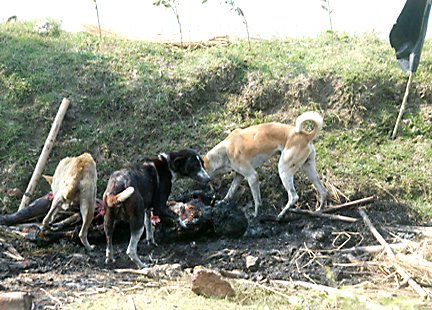

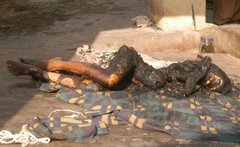
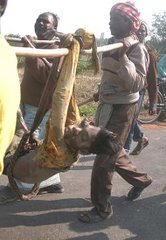
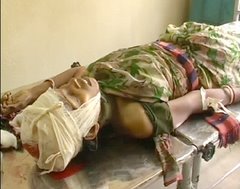

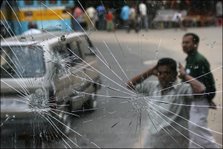
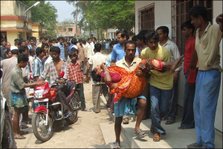

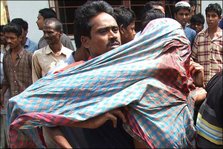


No comments:
Post a Comment